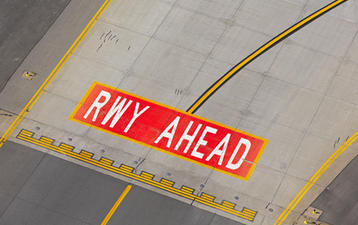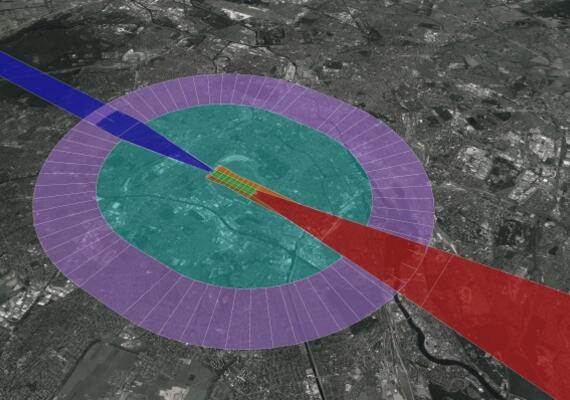CNS Impact Assessments and Technical Safeguarding at aerodromes
Infrastructural or operational changes at or near aerodromes may have an impact on Communication, Navigation or Surveillance equipment, such as Instrument Landing System (ILS), primary or secondary radars, conventional radio navigation aids (VOR, DME, etc.), radio transmitter/receiver antennas, etc.
To ensure safe air operations, it is required in accordance to ICAO regulations or their national implementation to demonstrate that proposed changes do not interfere with CNS equipment, or that risks are mitigated.
airsight successfully conducted numerous such assessments on behalf of Civil Aviation Authorities, aerodromes operators, Air Navigation Service Providers and project developers in many countries including Germany, Belgium, Luxembourg, France and Romania. In each project, airsight aimed to find practical solutions to facilitate new development or changes while avoiding too costly measures.
When is an assessment required?
In short, International Civil Aviation Organisation (ICAO) and national authorities developed a set of regulations related to the protection of CNS equipment. In most countries, ICAO EUR Doc 015 (European Guidance Material on Managing Building Restricted Area) or similar is used as reference. This document defines protection surfaces and approval procedures for new developments, constructions, or changes of equipment or operations.
Any obstacle above protection surfaces is subject to a detailed assessment.
CNS equipment may be affected by different types of infrastructure and equipment, including new buildings or facilities (terminal building, hangar), airport installations or equipment (e.g. jet blast fences, security fences, lighting mast), as well as vehicles and construction equipment (cranes, trucks, silos) or other objects (wind turbines).
Changes of operations, e.g. new aircraft types such as A380s, new taxiway routings or holding positions may also infringe the applicable surfaces.
Example of CNS impact assessments conducted by airsight:
airsight conducted several CNS impact assessments to assess the impact of:
- taxiway layout project and runway holding positions (Luxembourg)
- A380 operations on ILS and determination of operational limitation (France)
- remote aircraft stands near runway ILS glide path antenna (France)
- jet blast fences on CNS equipment (Germany)
- new hangar on CNS equipment (Romania)
What assessment methods have to be applied?
Assessment methods to be applied depend on the type of obstruction and CNS equipment affected. It ranges from a qualitative expert evaluation to complex signal-in-space simulations, requiring dedicated tools. In most projects, a combination of both is required.
The selection of the method to apply shall be discussed with the local authorities, taking into account problem complexity as well as cost.
What are the expected results of such assessment?
The end-results of an assessment is either to demonstrate that proposed changes have no significant impact, or to propose cost-efficient technical or operational solutions to mitigate detected interferences. This include slight building optimisation (shape, materials, facade modification, orientation, or relocation), the introduction of operational limitations or modification of CNS equipment.
The results of a CNS impact assessment may typically be submitted for final approval to the CAA or local ANSPs.
Key Facts


